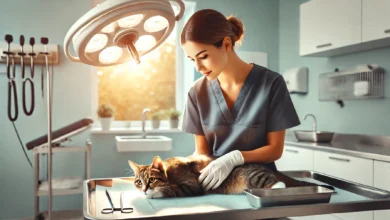The Role of Volunteering in Cat Adoption

Cat adoption is a selfless act that also offers its rewards.
The benefits go both ways: volunteers provide crucial support to cats in shelters while gaining important experiences that may last a lifetime.
Shelter cats are frequently overlooked, and without enough human interaction, they can become shy, anxious, or even aggressive.
Volunteers play a key role in socializing these cats, making them more adoptable and giving them a second chance at finding their forever homes.
In this article, we explore how powerful volunteering can be in changing the lives of both cats and humans in an adoption environment.
Whether you are an animal lover or looking for a way to contribute to your community, volunteering in cat adoption could be a meaningful way to change lives—including your own.
Table of Contents
How Volunteering Helps Cats in Shelters
Volunteers are the backbone of many cat shelters.
Without their time and energy, many cats would not receive the care they need to thrive.
Shelters often become overwhelmed by the number of cats in need of assistance, which makes volunteer support essential.
By donating your time, you ensure that each cat receives the individual attention they require.

Providing Socialization for Cats
Cats in shelters are often stressed and scared, especially if they were strays or abandoned.
Volunteers spend time with these cats, offering them comfort and teaching them how to trust humans again.
This process, known as socialization, is crucial for making cats more adoptable.
Without this interaction, many cats might remain fearful, making it harder for them to find a loving home.
Socialization involves simple activities like petting, talking to the cats, and playing with them.
Over time, these interactions help the cats become more comfortable with people, increasing their chances of being adopted.
By volunteering, you are offering these cats a better chance at life.

Improving Cats’ Mental and Physical Health
Just like humans, cats need mental and physical stimulation to stay healthy.
Volunteers play with cats to help reduce stress and improve their overall wellness.
Playtime with toys or even allowing a cat to roam outside its enclosure can make a significant difference in their mental health.
Physical health is equally important.
Volunteers help keep cats active to prevent them from becoming lazy or overweight while waiting for adoption.
Through this hands-on care, shelter cats remain physically and emotionally prepared for their new homes.

Building Trust Between Cats and Humans
Many shelter cats have experienced trauma, whether from abandonment, abuse, or neglect, making them hesitant to trust humans.
Volunteers play a critical role in rebuilding that trust.
Over time, with consistent and gentle interactions, these cats begin to feel safe again.
Through patience and kindness, volunteers help cats overcome their fears, allowing them to bond with people.
This newfound trust not only improves the cats’ lives but also makes it easier for them to adjust when adopted into loving homes.
Volunteering provides essential care and attention to shelter cats, increasing their chances of being adopted and improving their overall well-being.
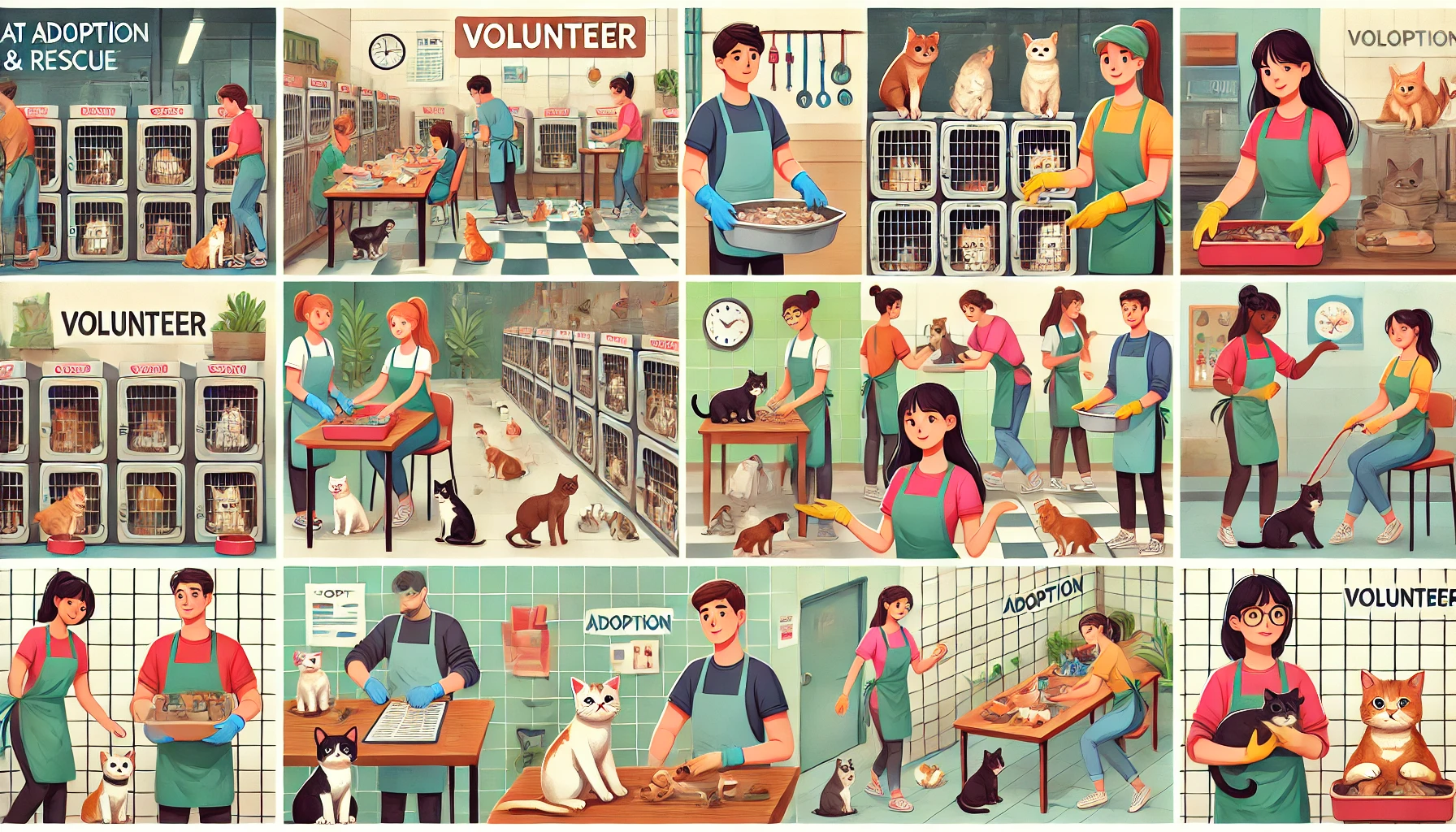
Volunteer Opportunities in Cat Adoption and Rescue
Volunteer work for cat adoption and rescue can vary widely depending on different skills and time availability.
No matter how much time you can volunteer each week, there is always something you can contribute.
Shelters and rescue groups depend heavily on volunteers to help with daily tasks, events, and special needs—all of which are crucial in providing proper care for the cats and increasing their chances of being adopted into permanent homes.

Helping with Daily Care and Feeding
One of the regular activities volunteers can do at cat shelters involves helping with daily care and feeding.
This includes cleaning litter boxes, refilling water bowls, and feeding cats with specific dietary requirements.
Many shelters follow strict feeding schedules, and volunteers help maintain these routines to keep the cats healthy and well-fed.
Daily care also involves cleaning the living areas of the cats, which goes a long way in ensuring their health.
Regular cleaning prevents diseases from spreading and keeps the shelter environment safe and comfortable for the cats.
If you enjoy hands-on work and don’t mind getting a little messy, this is a great way to make a direct impact on the lives of shelter cats.
- Cleaning litter boxes and living areas
- Feeding cats according to dietary needs
- Refreshing water bowls to ensure hydration

Assisting with Adoption Events
Adoption events are a critical part of finding homes for shelter cats.
Volunteers help organize and run these events by setting up booths, interacting with potential adopters, and answering questions about the cats.
They also assist with transporting cats to and from events, ensuring that each animal is safe and comfortable throughout the process.
Adoption events are perfect opportunities for volunteers to engage directly in helping cats find their forever homes.
These events are also an excellent way to share information about individual cats, such as their personalities and what makes them great companions.
If you enjoy interacting with people and want to play a hands-on role in facilitating adoptions, this is the niche for you.
- Setting up booths and organizing event materials
- Answering questions from potential adopters
- Transporting cats safely to and from events

Fostering Cats in Need
One of the most rewarding ways to volunteer in cat adoption and rescue is through fostering.
Shelters often run out of space, and foster homes provide temporary housing for cats until they can be adopted.
Foster volunteers take these cats into their own homes, giving them the love, attention, and socialization they may not receive in a busy shelter environment.
Fostering is especially crucial for cats that need extra care, such as kittens, senior cats, or those recovering from medical treatments.
By fostering, you give these cats the time and space they need to heal, grow, and get ready for their forever homes.
Many foster volunteers find the experience deeply rewarding, knowing they played a critical role in a cat’s journey toward adoption.

Assisting with Transportation for Cats
Another valuable way to contribute as a volunteer is by helping with transportation.
Many shelters rely on volunteers to transport cats between facilities, vet appointments, and adoption events.
In some rescues, particularly those in rural areas, volunteers may help move cats from high-risk situations to safer shelters or foster homes, sometimes across state lines.
Transportation volunteers ensure that cats are safely moved from one place to another, and their role is essential in the adoption process.
If you own a vehicle and are comfortable driving animals, this is a great way to make a significant difference.
- Transporting cats to and from adoption events
- Driving cats to veterinary appointments
- Helping relocate cats to foster homes or other shelters
There are many ways to get involved in cat adoption programs, from daily care and feeding to helping at adoption events and fostering cats in need.
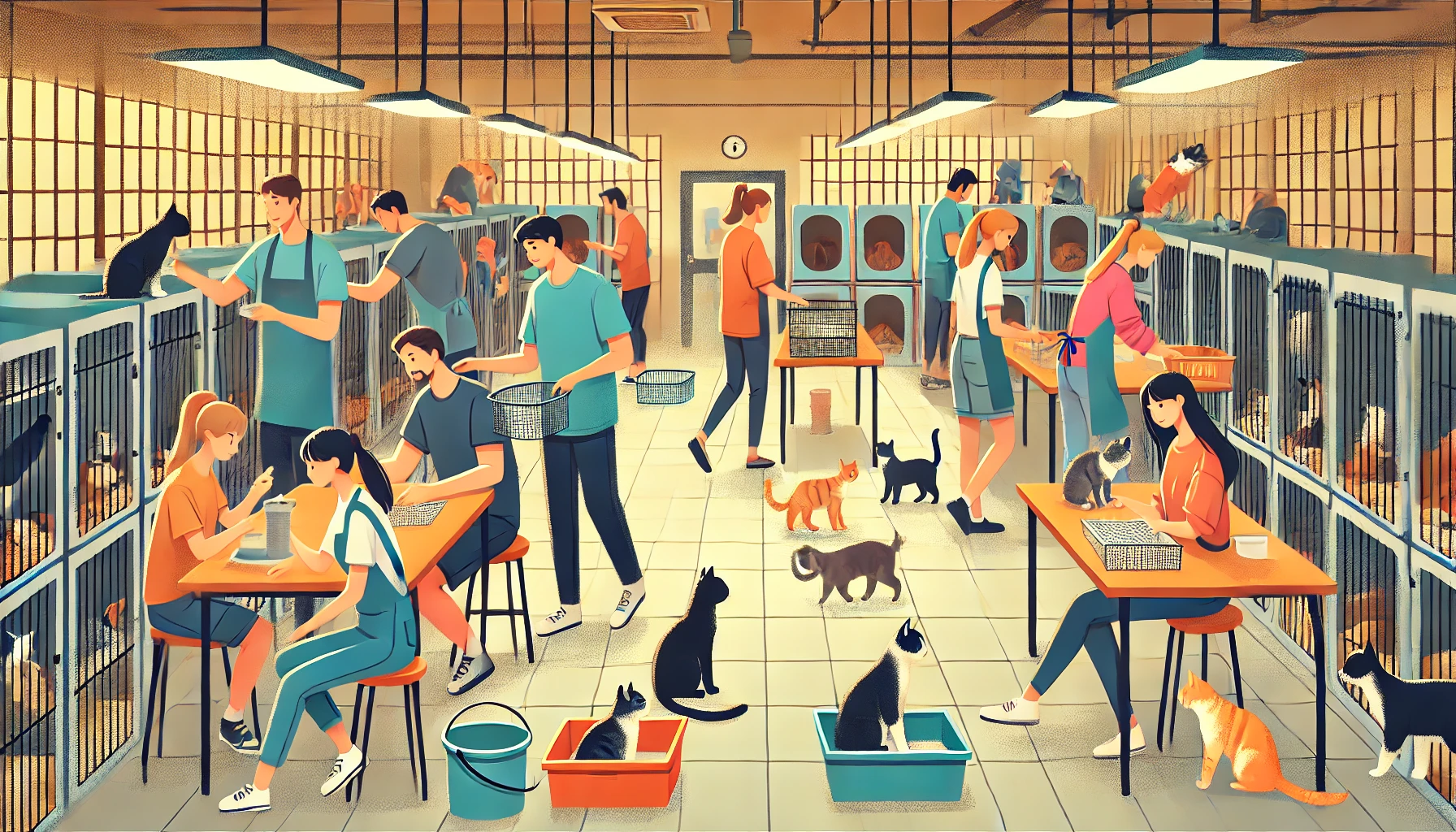
Why Volunteers Are Crucial in Cat Adoption Programs
Volunteers are the lifeblood of all cat adoption programs.
Without their dedication and hard work, many shelters and rescue organizations could not function as well as they currently do.
Volunteers participate in all facets of daily operations, along with providing much-needed emotional and physical attention to maintain healthy and adoptable cats.
The importance of volunteers to cat adoption programs cannot be overstated, as their input directly impacts the quality of life for cats and the effectiveness of the adoption process itself.
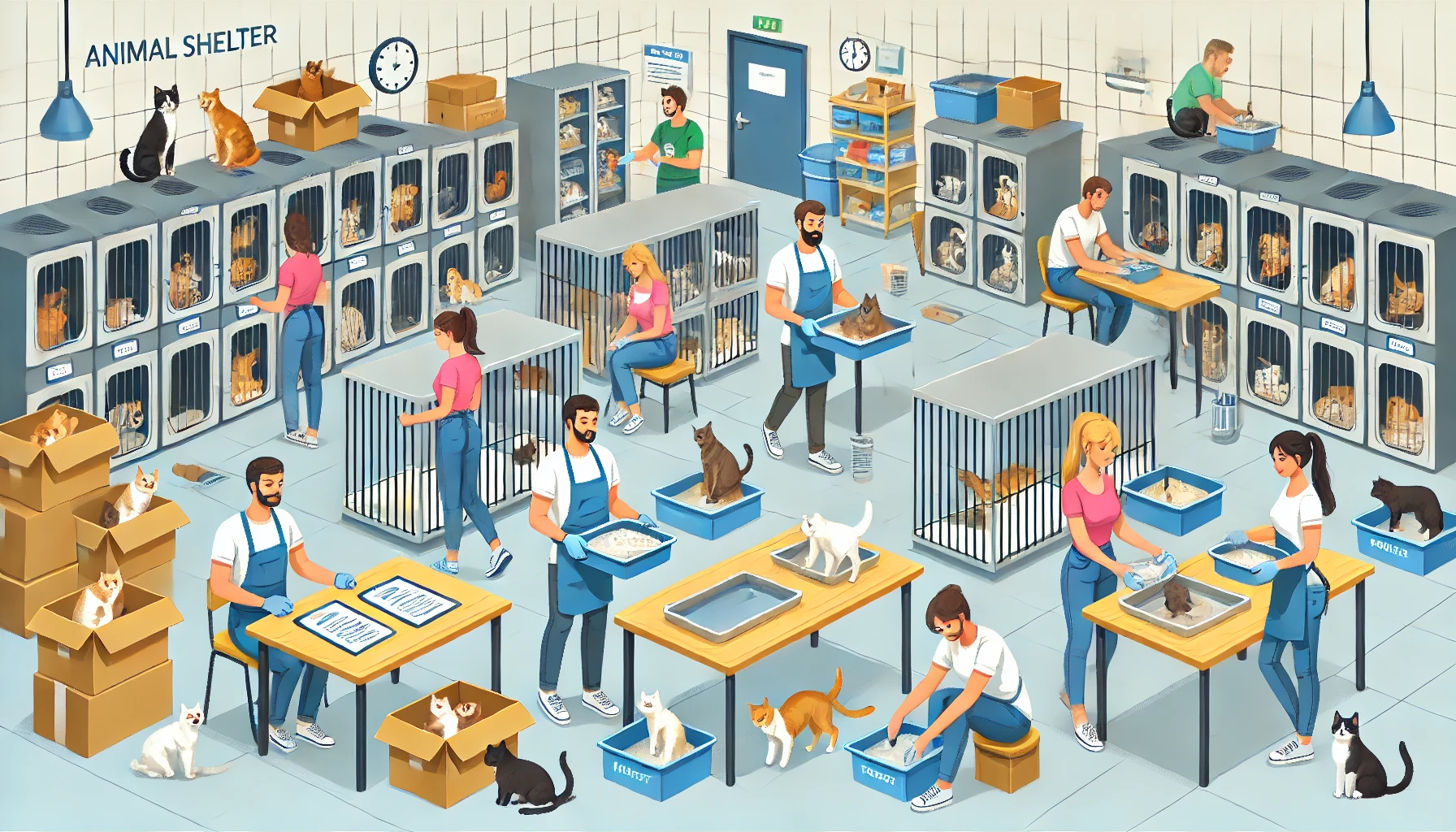
The Impact of Volunteer Hours on Shelter Operations
Most shelters operate with minimal staffing and resources, making volunteers invaluable.
Any hour that a volunteer can contribute helps reduce the workload for full-time employees and allows shelters to care for more cats.
Volunteers contribute thousands of hours annually to responsibilities such as feeding, cleaning, and spending time with the cats.
These tasks enable shelters to maintain higher standards of care.
Without volunteer support, many shelters would be forced to reduce the number of cats they care for or scale back their services.
In addition to hands-on care, volunteers often assist with administrative tasks, marketing, and fundraising—all important behind-the-scenes functions that keep shelters operating.
These volunteered hours give shelters the ability to provide more cats with the opportunity for lifelong homes.
- Easing the workload of full-time employees
- Enabling shelters to take in more cats
- Helping with administrative and marketing tasks
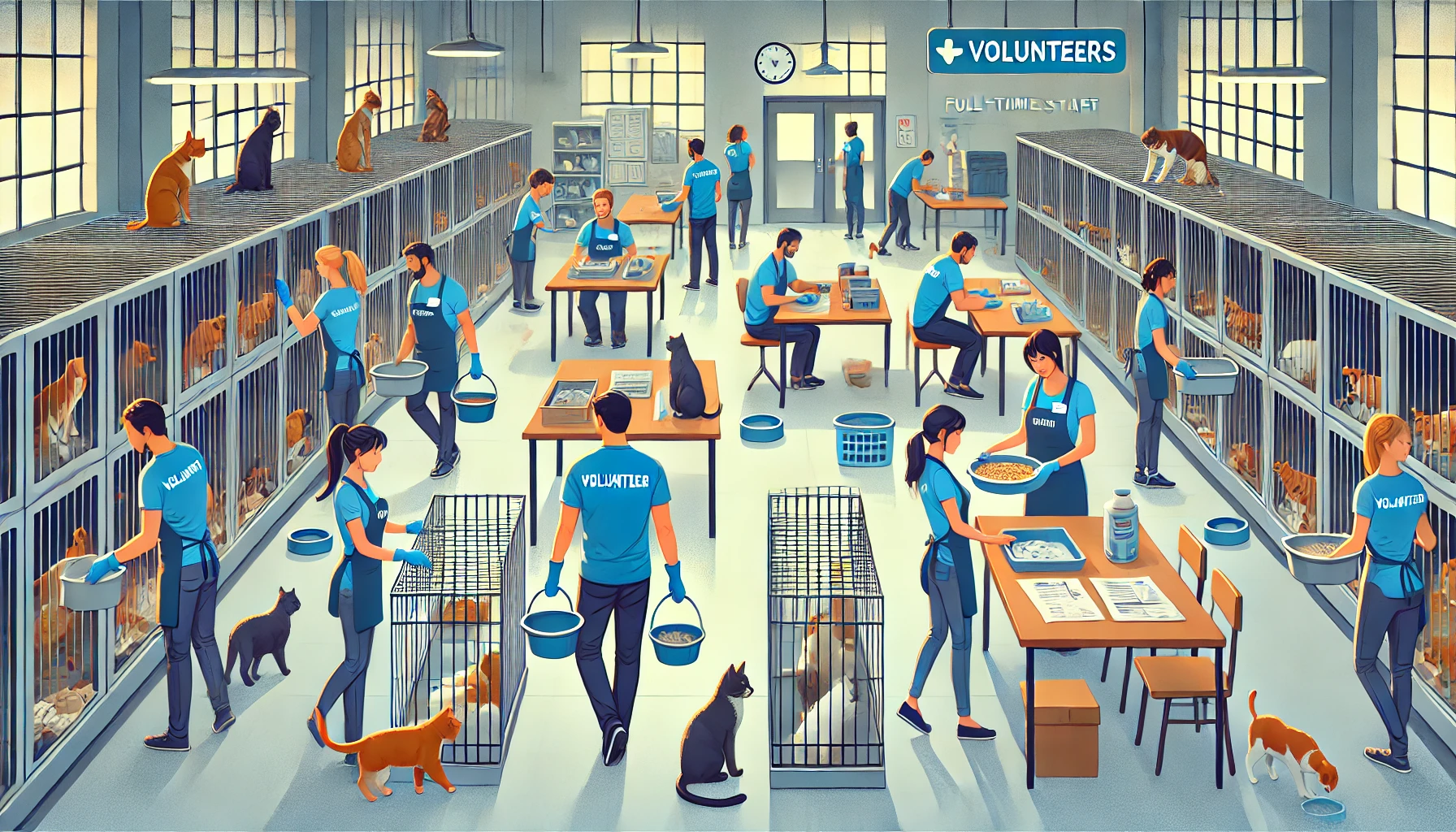
Lightening the Workload of Full-Time Shelter Employees
Shelter staff are often stretched thin, managing a high volume of animals with limited resources.
Volunteers help alleviate this pressure by taking on tasks that the staff may not have time to handle.
This allows staff to focus on specialized roles, such as medical care or managing adoptions, while volunteers handle routine duties like cleaning, feeding, and socializing the cats.
Having volunteers on duty lightens the workload for full-time staff, ensuring that shelter operations run smoothly and that cats receive the care they need.
Reducing the risk of staff burnout also creates a more positive work environment, benefiting both staff and animals.
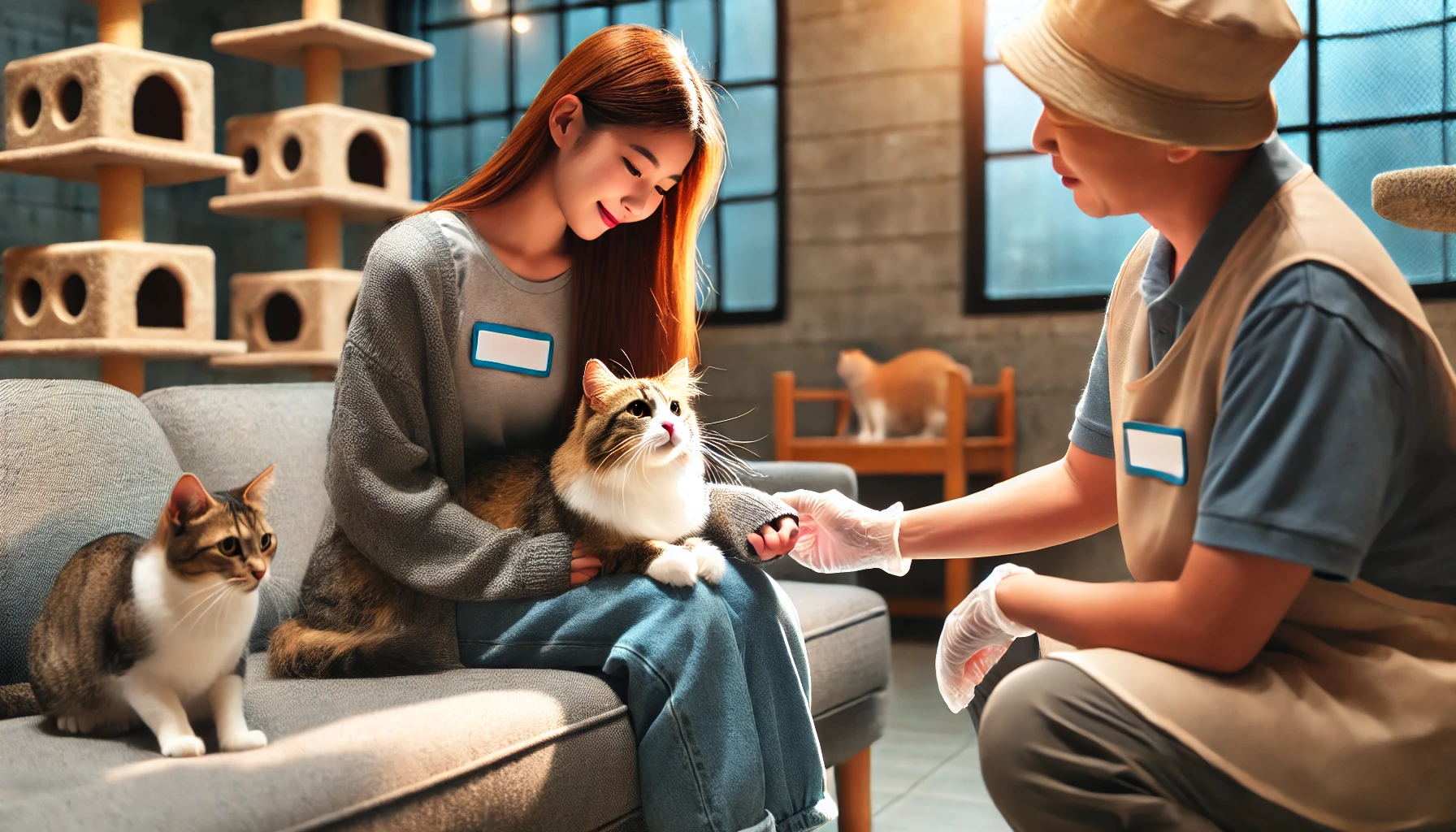
Creating Positive Adoption Experiences for Cats and Adopters
Volunteers play an important role in providing positive adoption experiences for both cats and adopters.
They socialize with the cats and spend time preparing them for new homes, helping them become more comfortable and adaptable.
A well-socialized cat has a greater chance of successfully transitioning into a new home, increasing the likelihood of a permanent adoption.
Volunteers also assist adopters by answering questions, sharing information about the cats’ personalities, and guiding them through the adoption process.
This guidance helps adopters feel more confident in their decisions, leading to better matches between cats and their new families.
Volunteers serve as the bridge between a cat’s shelter life and their forever home, making them an essential part of the success of the adoption program.
- Socializing cats to prepare them for adoption
- Helping adopters understand the cats’ personalities
- Creating a comfortable adoption experience for both cats and adopters
Without volunteers, many shelters would struggle to provide the necessary care and attention to cats, affecting their health and adoption outcomes.
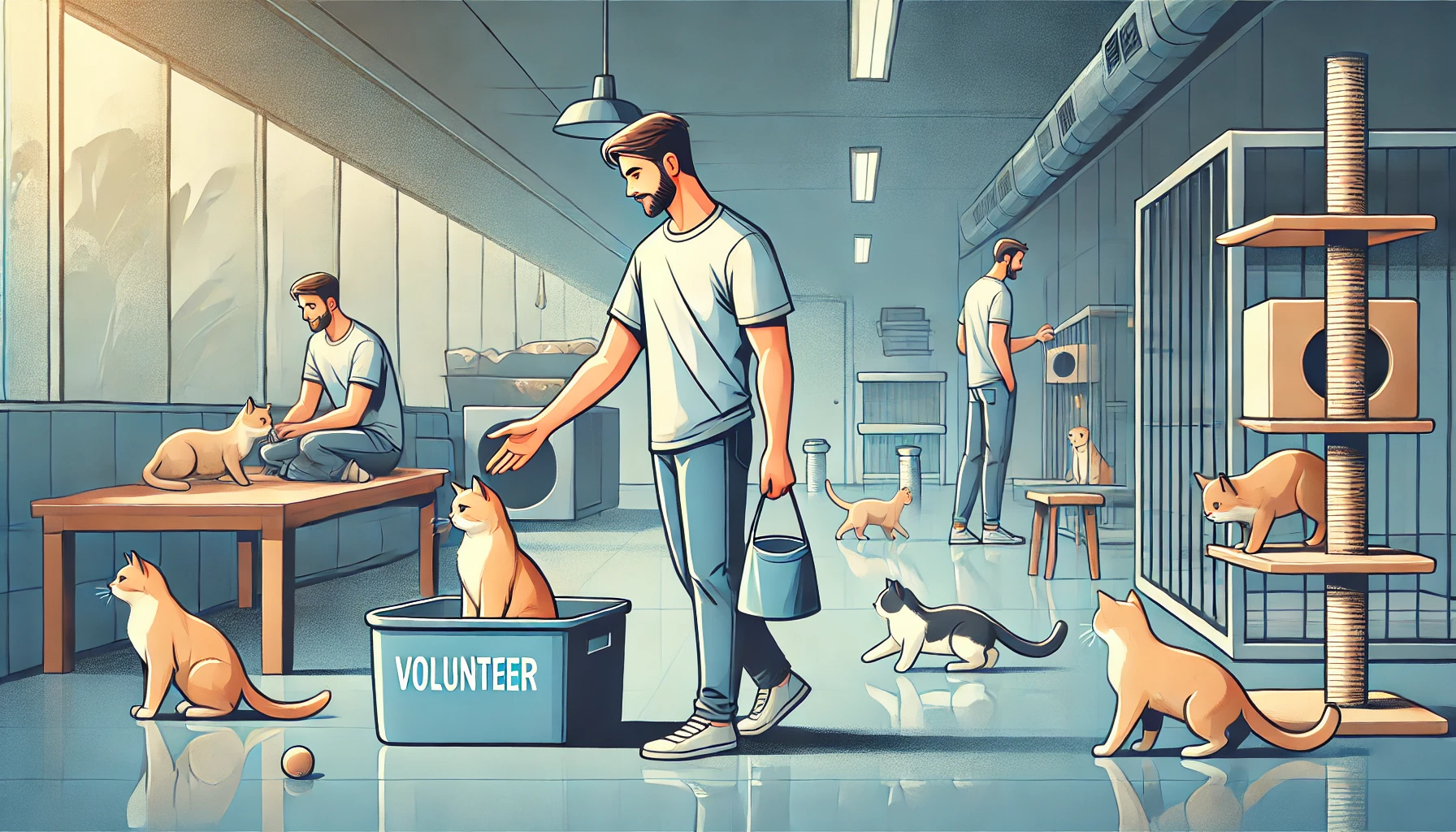
How Volunteering Prepares You for Cat Adoption
It goes without saying that volunteering in cat adoption programs yields its own rewards for both the shelter and the cats.
However, it can also be a helpful way to prepare for adopting a cat of your own.
The time spent with cats in a shelter environment imparts valuable insight into their behavior, needs, and personalities, which helps to smooth and enrich the transition to being a cat owner.
Whether you are a first-time owner or have previous experience, this volunteer opportunity allows you to actively learn about cat care while also helping shelter cats.

Learning About Cat Behavior and Needs
Volunteering in a cat shelter allows you to observe and interact with cats in various situations, helping you understand their behaviors and needs.
Cats communicate through body language, vocalizations, and subtle gestures.
As you spend time with them, you’ll become attuned to these signals.
Whether a cat is playful, stressed, or anxious, you’ll learn how to read their cues and respond appropriately.
Understanding basic cat behaviors such as grooming, scratching, and social interactions is critical to providing a safe and happy home for a future pet.
Volunteering offers a front-row seat to observe these behaviors and learn how to support a cat’s physical and emotional well-being.
- Recognizing cat body language and vocal cues
- Understanding grooming and scratching behaviors
- Learning how to support a cat’s emotional well-being
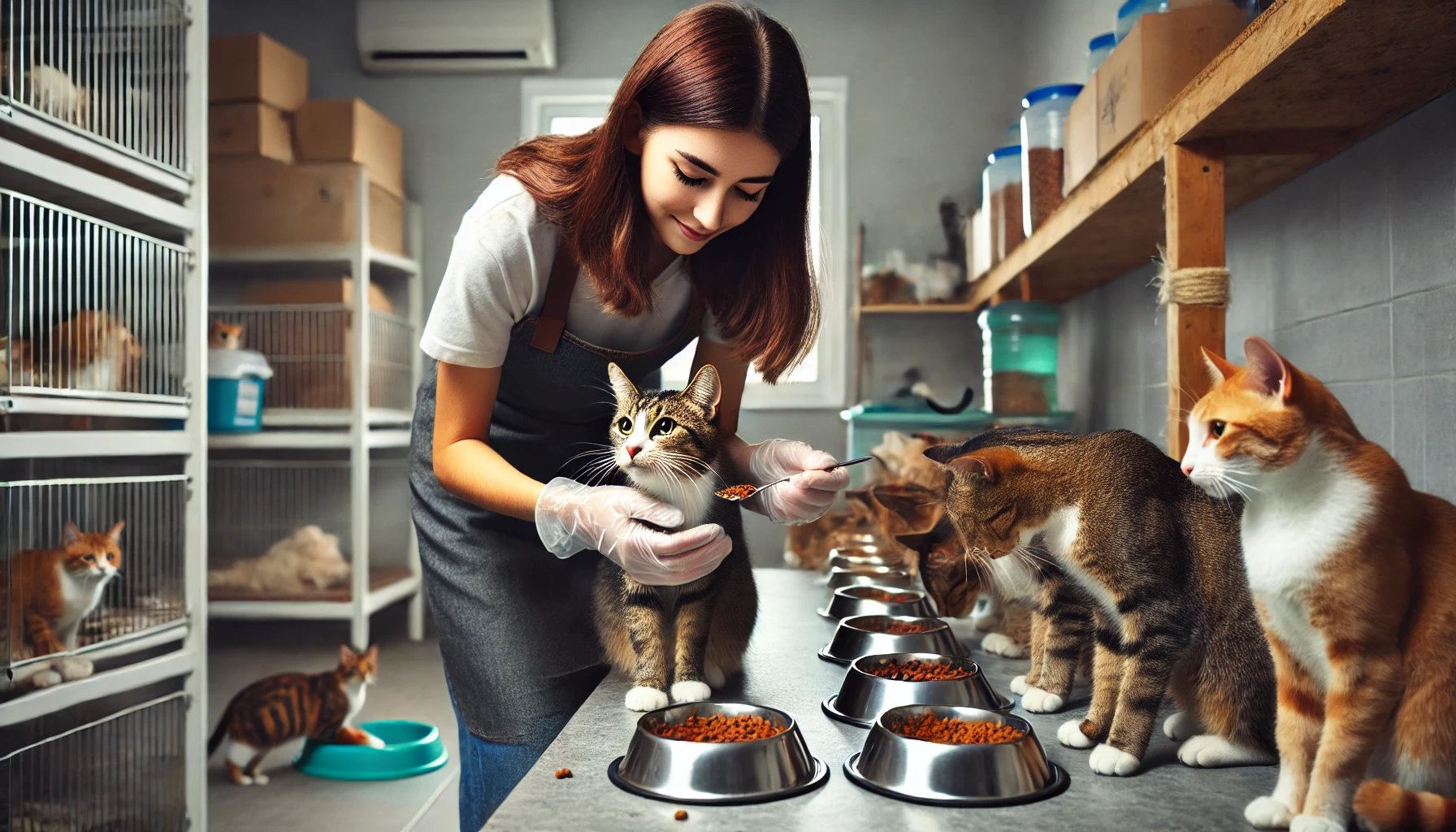
Gaining Hands-On Experience with Cat Care
Caring for shelter cats provides valuable hands-on experience that prepares you for adopting your own cat.
Tasks such as feeding, grooming, and cleaning litter boxes may seem straightforward, but each cat has unique needs.
Learning to manage these tasks in a shelter environment helps build important skills, giving you the confidence to care for a cat in your own home.
Volunteers also learn about common cat health issues, such as digestive problems or respiratory infections, and how to recognize warning signs.
This knowledge will be useful when adopting your own cat, as you’ll be better equipped to deal with everyday care and potential health challenges.
- Feeding and caring for cats with special dietary needs
- Learning how to properly groom and maintain a cat’s hygiene
- Understanding common cat health issues and how to address them

Building a Strong Bond with Cats
One of the most rewarding aspects of volunteering is developing a special bond with the cats.
Spending time with them, offering love and attention, and allowing their personalities to shine through helps you understand the deep bond that can develop between a cat and its owner.
This emotional connection can also prepare you for the commitment of adopting a cat and caring for them throughout their life.
It’s incredibly satisfying to gain the trust of cats, especially those that are timid or anxious.
The time and effort you invest in shelter cats will not only increase their chances of adoption but also give you a glimpse of the companionship and love you can expect when you adopt a cat of your own.
- Gaining trust with timid and anxious cats
- Forming emotional bonds that prepare you for owning a cat
- Understanding the long-term commitment involved in cat ownership
Volunteering offers hands-on experience with cats, helping you understand their behavior, care needs, and health issues, which can prepare you for adopting a cat of your own.

Getting Involved with Cat Adoption through Volunteering
Getting involved in cat adoption volunteering is easier than you might think.
There are numerous opportunities available for anyone passionate about helping cats, regardless of experience.
Whether you have a lot of time to offer or just a few hours per week, you can make a significant difference in the lives of shelter cats.
From assisting with daily care to fostering, helping shelters and rescue organizations ensures that every little bit counts.
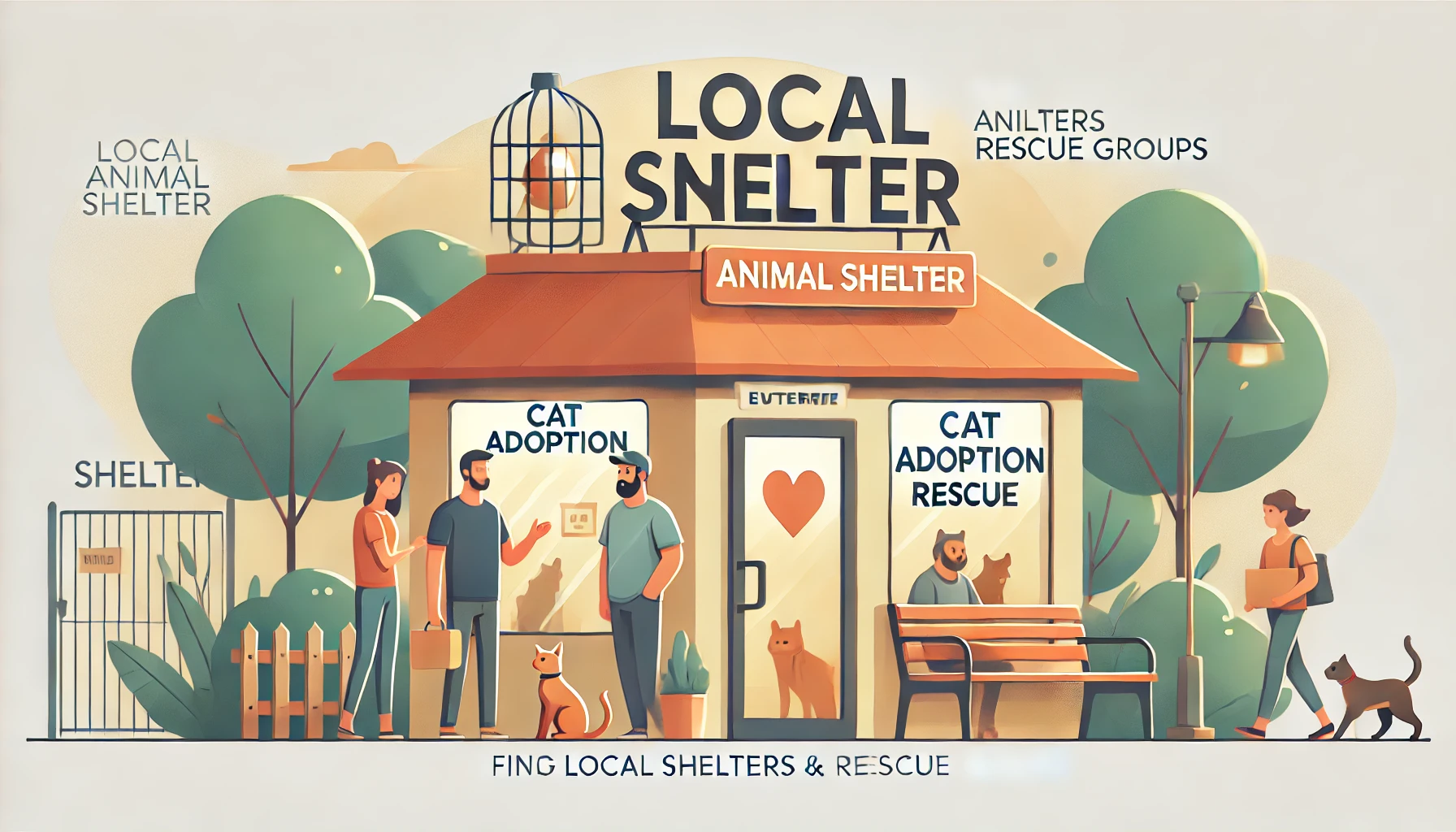
Finding Local Shelters and Rescue Groups
The first step in volunteering is to find local shelters and rescue groups that need help.
Most shelters post volunteer opportunities on their websites, where you can read about their specific needs.
You can also contact them directly to ask how you can contribute.
Additionally, websites like Petfinder and RescueGroups.org allow you to search for shelters and rescue groups in your area.
These platforms often list the types of volunteer opportunities available and provide information on how to get started.
- Check shelter websites for volunteer information
- Use websites like Petfinder to locate rescue groups in your area
- Contact local shelters to ask if they need volunteers
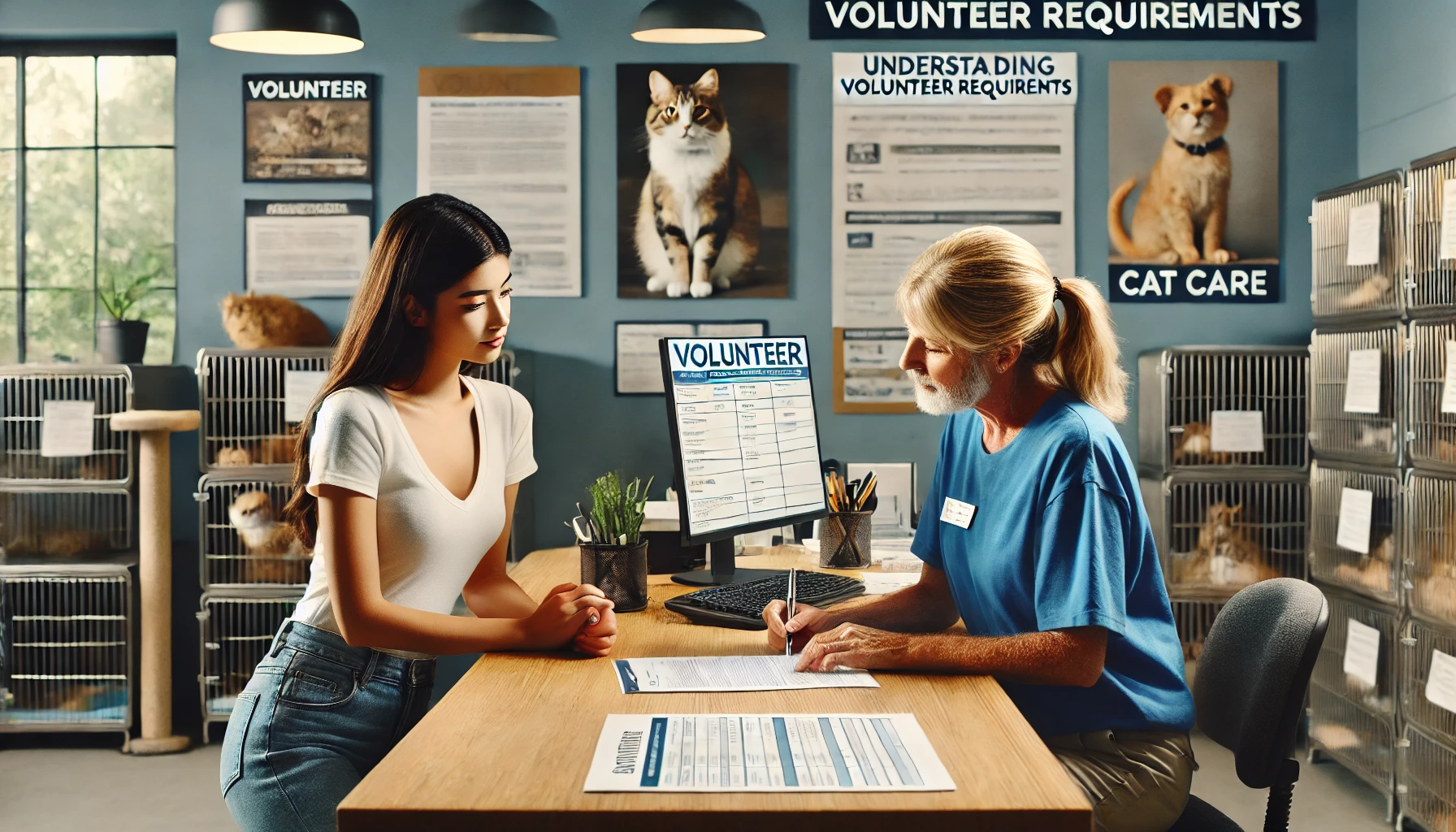
Understanding Volunteer Requirements
Most shelters and rescue groups have specific requirements for volunteers.
These can include minimum age limits, set hours of volunteering per month, or mandatory training sessions.
Before you begin, it’s important to ask about any rules related to vaccinations, liability waivers, and available training programs.
Consider your availability and skill set when looking to volunteer.
Shelters often need volunteers with diverse skills, ranging from cleaning and feeding to event organization and social media management.
Understanding your strengths will help you find the right fit and make the most of your time as a volunteer.
- Ask about minimum age requirements and time commitments
- Inquire about necessary training or preparation sessions
- Consider your own availability and skill set

Getting Ready for Day One as a Volunteer
Once you’ve signed up, it’s time to prepare for your first day of volunteering.
Make sure you understand the expectations, including your responsibilities and any safety precautions you need to follow.
Many shelters offer tours or orientations to help familiarize new volunteers with the environment.
Dressing appropriately is also important.
Wear comfortable clothing that you don’t mind getting dirty, as well as sturdy shoes.
Depending on your tasks, you may also need gloves or other protective gear, which some shelters provide.
- Understand your responsibilities and safety precautions
- Attend any orientations or training sessions
- Dress comfortably and be prepared to get messy

Building Long-Term Volunteer Relationships
While some people volunteer once, others choose to commit to long-term volunteering.
Many shelters rely on long-term volunteers who build lasting relationships with the staff, animals, and fellow volunteers.
The more you volunteer, the better you understand the shelter’s needs and how you can contribute.
Long-term volunteers may take on additional responsibilities, such as mentoring new volunteers or organizing larger projects and events.
Building relationships with the shelter community can enhance your volunteer experience and allow you to make an even greater impact on the cats in need.
- Consider making a long-term commitment to volunteering
- Take on additional responsibilities over time
- Build strong relationships with the shelter staff and community
Starting as a volunteer in a local shelter is easy and provides opportunities to make a significant impact on the lives of cats in need of adoption.

The Importance of Volunteering in Cat Adoption
Volunteers make cat adoption programs vital, as they create a significant difference in the lives of shelter cats, the shelters themselves, and even the volunteers.
From fostering to assisting with daily care and helping at adoption events, volunteers provide invaluable support that ensures many more cats find permanent, loving homes.
As shown throughout this article, volunteering is a rewarding way to contribute to the welfare of cats while gaining valuable experiences and knowledge.

Volunteers: The Backbone of Shelters
Most shelters and rescue organizations would not be able to provide the level of care required for their cats without volunteers.
Volunteers invest time in caring for, cleaning, and socializing cats—all of which are essential to the health and well-being of the animals.
By easing the workload of full-time staff, volunteers help shelters run more smoothly, allowing more cats to receive the attention they need to thrive.
In addition to direct care, volunteers assist with administrative tasks, marketing efforts, and organizing adoption events.
This enables shelters to maintain higher standards of care and advance their mission of finding homes for as many cats as possible.

How Volunteering Prepares You for Cat Adoption
Volunteering in cat adoption programs not only benefits the shelter and the cats but also provides valuable advantages for individuals considering adopting a cat.
Through volunteering, you learn about cat behavior, how to care for them, and their common health concerns.
This experience equips you to transition smoothly into cat ownership when you bring a cat into your home.
Additionally, volunteering helps you form emotional bonds with the cats, giving you insight into the strong connection between a pet and its owner.
This experience serves as a stepping stone toward successful, long-term cat ownership.
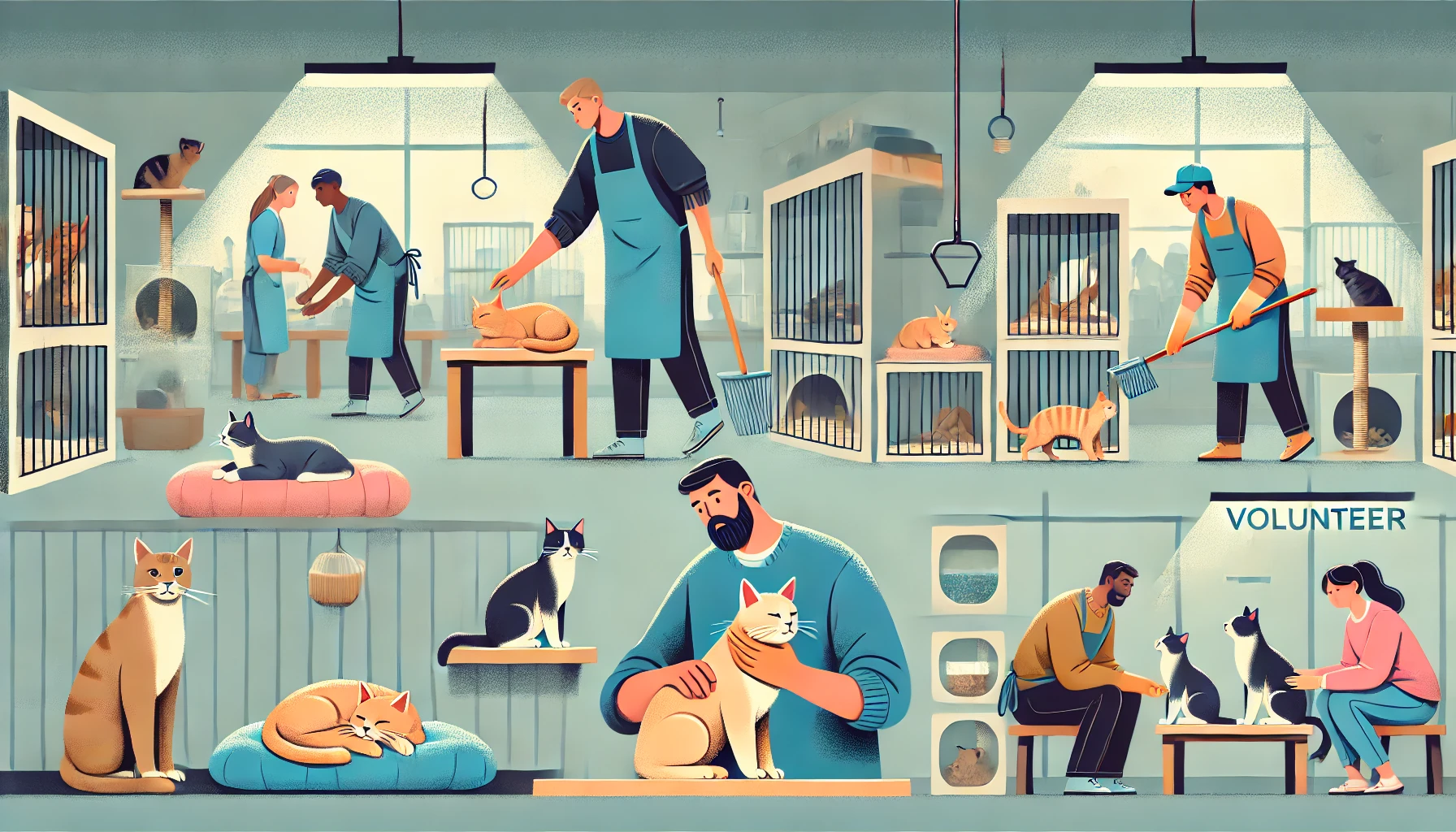
Creating a Lasting Impact by Volunteering
No matter the size of your contribution, every volunteer effort plays a part in the success of a shelter’s cat adoption program.
Volunteers help make adoptions more successful by socializing cats, improving their health and well-being, and assisting with the adoption process.
In doing so, they enhance the lives of the cats and the families who adopt them, bringing joy and companionship to both.
This is particularly true for long-term volunteers, who make a significant difference by building deeper relationships with shelter staff, taking on more responsibilities, and mentoring new volunteers.
By committing to ongoing volunteer work, you can leave a lasting impact on the lives of countless shelter cats.

Why You Should Consider Volunteering in Cat Adoption
If you love cats and want to make a difference, volunteering in cat adoption programs is one of the most effective ways to contribute.
You will improve the lives of shelter cats, develop valuable skills, build meaningful relationships, and make a lasting impact on your community.
Whether you’re preparing to adopt or simply seeking to support your local shelter, volunteering at an animal shelter offers a rewarding and enriching experience.
In conclusion, the role of volunteering in cat adoption cannot be understated.
Volunteers are essential players in preparing cats for adoption and helping shelters achieve their mission of ensuring more cats find forever homes.
By stepping into this role, you become an indispensable part of a larger mission to improve the lives of shelter cats and provide them with the love and care they deserve.
Volunteers play a vital role in ensuring that shelter cats are well cared for and have the best chance of finding forever homes through adoption programs.
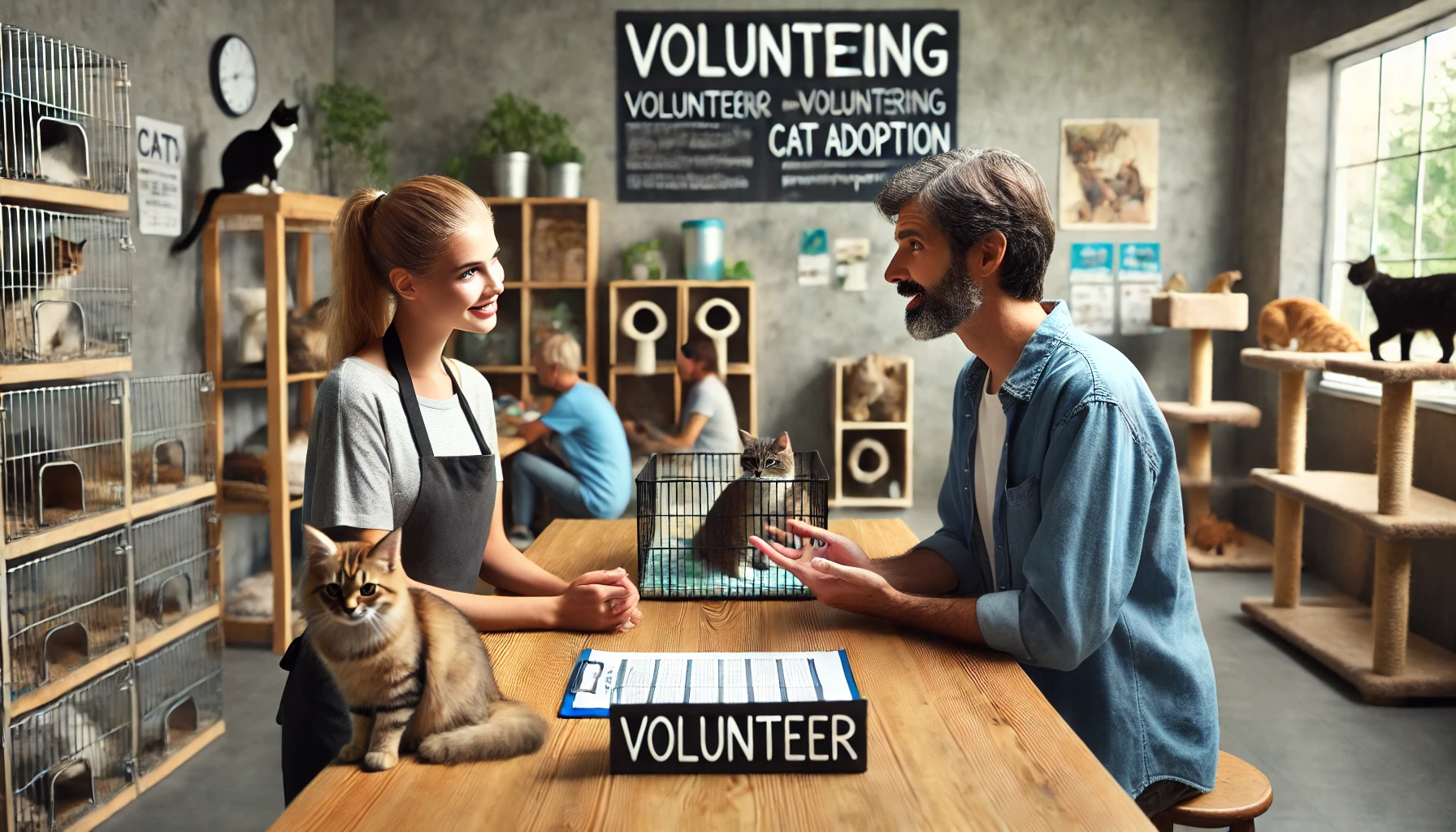
Frequently Asked Questions About Volunteering in Cat Adoption
Below are some common questions and answers about volunteering in cat adoption programs, designed to help you better understand how you can make an impact.
How do I start volunteering in a cat shelter?
Search online for shelters in your area, visit their websites for volunteer openings, or contact them directly.
Most shelters have a simple online signup process or form to get started with volunteering.
What are the primary responsibilities of a cat adoption volunteer?
Volunteers participate in day-to-day care, including cleaning, feeding, and socializing cats.
They may also assist with administrative tasks, adoption events, and fundraising activities to support the shelter’s operations and adoption efforts.
Do I need experience to volunteer in a cat shelter?
Most cat shelters do not require prior experience.
Many shelters provide orientation or training for new volunteers, making it accessible for individuals of all skill levels to get comfortable with the tasks and responsibilities.
Can I foster a cat as a volunteer?
Yes, many shelters offer foster programs where volunteers can temporarily care for cats in their homes until they are adopted.
Fostering is a great way to help cats that need extra attention and space.
How does volunteering help me prepare for adopting a cat?
Volunteering teaches you about cat behavior, care routines, and health needs, which helps prepare you for adopting a cat.
It provides hands-on experience with cats, allowing you to build confidence as a future cat owner.
What is the time commitment for cat adoption volunteers?
The time commitment varies based on the shelter’s needs and your availability.
Many shelters require volunteers to commit to a set number of hours per month but often offer flexible options for those with varying schedules.
Are there age restrictions for volunteering in cat adoption programs?
Most shelters have minimum age limits for volunteers, often set at 16 or 18 years old.
Younger volunteers may need parental supervision or special permissions to participate in certain activities.
Can I help with adoption events as a volunteer?
Yes, volunteers are often essential in organizing and running adoption events.
Tasks may include setting up booths, answering questions from potential adopters, and assisting with the safe transportation of cats to and from the event.
What skills can I gain from volunteering with cats?
Volunteering with cats helps you develop skills in animal care, communication, teamwork, and problem-solving.
You’ll gain hands-on experience with feline behaviors, which can be valuable if you plan to adopt a cat in the future.





